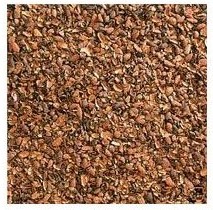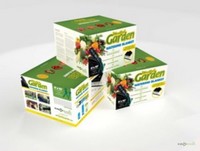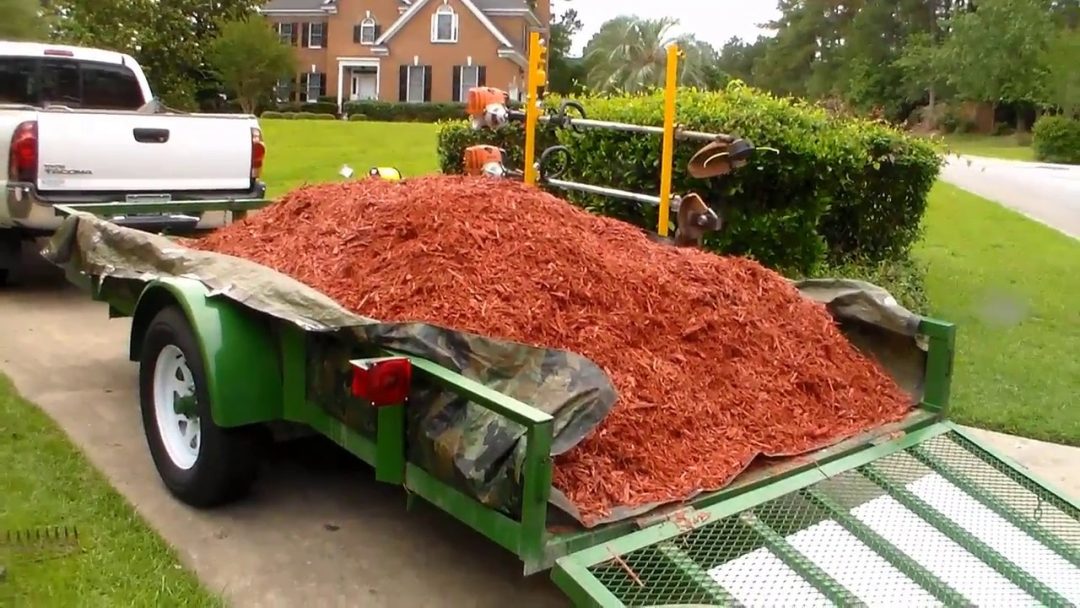Complete List of Organic & Synthetic Mulch Types
All types of mulch can be put into one of two buckets: organic mulch, which consists of material that used to be alive, and synthetic mulch, which is manmade. This page will review the differences along with which mulch types fall under each category.
Differences Between Synthetic & Organic Kinds of Mulch
Decomposition/Soil Amendment
With the exception of paper mulch, synthetic types of mulch do not decompose into the soil. Organic mulch, on the other hand, will slowly become part of your garden soil and in some cases actually, improve your soil’s quality. This may or may not be appropriate depending on your situation.
For example, if you are trying to make your soil healthier, compost is almost always recommended either as mulch or to be tilled directly into the soil. But if your primary goal is to warm your soil to allow your plants to get an earlier start, black plastic mulch is ideal.
Moisture retention
Organic mulch is also better at retaining soil moisture which can both help and hurt your garden depending on the situation… moist mulch is a great thing for keeping the soil cool in the summer, but it can also overly cool if applied too early in the spring.
Moist mulch also attracts slugs and snails, so you may want to go the synthetic route around susceptible plants such as artichokes, citrus trees, strawberries, and tomatoes.
Soil pH
Organic mulch tends to bring down garden soil pH (make it more acidic). This isn’t necessarily a bad thing, and your soil’s pH level will most likely bounce back quickly, but be mindful of it when using your soil pH tester each year.
Cost
the synthetic type of mulch, while excellent at retaining heat and moisture and keeping garden weeds at bay, is more expensive than organic mulch. After all, it’s hard to compete with free!
Sustainability
An obvious downside of most synthetic mulches is that they must eventually be thrown away which is not an option for those striving to live a truly sustainable lifestyle.
Permeability
Organic mulch naturally allows water to get through to your soil, while most types of synthetic mulch do not. To address this, you can either punch small holes into the synthetic mulch or use a soaker hose or drip irrigation system.
Specific Synthetic & Organic Mulch Types
Following are some of the most common types of mulch in each category. We highly recommend a combination approach of both the best organic and synthetic mulches, especially for larger beds and a more diverse range of crops.
Organic Mulch
Top choice – Compost
Compost is an ideal mulch that your plants will love. The trouble is, you may not have prepared enough of it to go around. If your compost supply is getting low, use it first to amend your soil and then around plants that produce big fruits to give them the added nutrient boost they crave. (See Composting Basics for more information about compost and how to make it)

Cocoa Bean Mulch
Cocoa mulch’s attractive smell, good looks, and soil benefits make it a great option for most gardeners, with one big exception: dog owners. See our Cocoa Bean Mulch page for more information.
Grass clippings
The extra nitrogen that your garden will receive from grass clipping mulch makes this an especially good choice for vegetables. It’s also good for keeping the soil cool in the summer. On the downside, the clippings may contain weed seeds which could add weeds to your garden.
Pine needle mulch
when churned into your soil in the fall, pine needles can help to correct soil that is too alkaline. This effect will be much less drastic when your pine needles are used as mulch, but it still may make your soil a bit more acidic.
Living mulch
Living mulch refers to the process of using neighboring plants to shield out the sun and prevent evaporation from below. To apply this mulch, thin plant leaves so that each plant barely touches those around it, thereby creating a “leaf roof” over the surrounding soil.
Sawdust
An okay option, but you’ll need to add organic garden fertilizer before applying since it can lower your soil’s nitrogen content as it decays.
Shredded bark or wood chips
If you don’t have a shredder at home, you can pick these up at your local nursery or from the company that collects the yard waste in your area. Neither bark nor wood chips is recommended around annuals since they both can be difficult to move out of the way when replanting.
As with sawdust, you should add organic fertilizer prior to using it.
Shredded leaves
In addition to being free, leaves contain soil nutrients only available to the deep roots of their trees. They’re a perfect mulch to be used during the winter and should be both churned into your garden soil and applied as a mulch after your last fall harvest.
The more chopped-up the leaves are, the quicker they’ll decompose and the faster their nutrients will be available for your plants, so run a lawnmower over them before using (some lawn mower mulching blades are better suited than others for this task). Keep in mind that shredded leaves insulate better than many other organic mulches, so they’re not a good option for keeping the soil cool in the summer.
Straw or seed-free hay
These are two more great and aesthetically pleasing types of mulch that will keep the soil cool in the summer. And some plants such as “straw”berries (yep, that’s where the name comes from) and heavier vegetables such as pumpkins (helps keep the bottom of the fruit dry and less likely to rot) may actually prefer it. Just be sure to use the kind that has NO weeds or seeds.
Well-rotted manure
Available at garden centers, zoos and some local farms, well-rotted (composted) manure is another great option that will enrich your soil while keeping weeds out, moisture in and temperatures steady.
Synthetic Mulch
Top choice – Garden Watering Blanket Kit
Garden Watering Blanket Kit combines the best of all mulching worlds… essentially a landscaping mulch meets black plastic mulch meets drip irrigation system: it lasts much longer than black plastic mulch, it’s air- and water-permeable and it has built-in drip irrigation for water conservation and direct-delivery.
 The entire kit includes:
The entire kit includes:
- 8×10 Garden Blanket
- 5 lbs of Granular Organic Fertilizer
- 1 Pint Liquid Organic Fertilizer
- Soil Test Kit
- 15 Biodegradable Fabric Stakes
- Header Hose (pro-quality components)
- 10 PSI Pressure Reducer
For added warmth, just place your favorite organic mulch over the top of it. In the open air, it should last you at least 5 years. If covered by organic mulch, it can last up to 20 years or more.
Click here to purchase the entire Garden Watering Blanket kit or click here to purchase the kit without the fertilizer and soil test kit.
Biodegradable paper
Technically, this could also be in the “organic” section above since paper comes from trees. But since it competes directly with synthetic mulches (in functionality and application) and is manmade, we thought it more appropriate to add it here.

Although it won’t heat your soil as well as black or IRT plastic, its darker color absorbs sunlight which will help to warm things up. After the season is over, just till it into the soil.
Newspaper
Newspaper is effective as a base layer when combating a particularly bad weed problem. Place a layer of newspaper below a thick layer of organic or plastic mulch. This is also a great technique for weed-free garden walkways.
The Rest of the Synthetic Types of Mulch
Due to their effectiveness and/or environmentally-friendly nature, we strongly recommend using a Garden Watering Blanket, Biodegradable Paper Mulch, and/or newspaper (discussed above) for your synthetic mulch needs. But just so you know they’re out there, here are your other synthetic options…
Landscaping Mulch is a good option for weed control, although it does not warm the soil by itself. It’s more expensive than plastic mulches but will last much longer.
Black plastic – In addition to preventing weeds and keeping your soil moist, black plastic mulch is ideal for warming soil, and – like straw – it will keep ground-touching fruits dry and rot-free. However, it should not be used under trees and shrubs. (NOT AS ENVIRONMENTALLY FRIENDLY)
Infrared transmitting (IRT) plastic is even more effective at weed control and warming soil than black plastic but it has a higher price tag. As with black plastic, it also should not be used under trees and shrubs. (NOT AS ENVIRONMENTALLY FRIENDLY)
Was this page helpful? If so, please tell your friends about it with a Facebook like or via Twitter, Pinterest, email, or good old fashioned word of mouth. Thank you for supporting our efforts!

